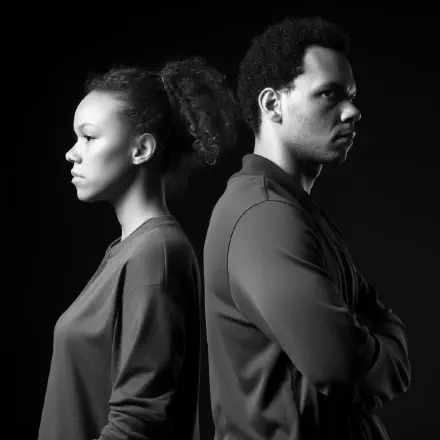
Introduction
Inductive reasoning is a process of arriving at a general conclusion based on a specific set of observations or experiences. It is a fundamental aspect of critical thinking, problem-solving, and decision-making. While this process may seem straightforward, there are many emotions involved in making logical conclusions. Understanding these emotions is crucial in effectively using inductive reasoning.
The emotions behind inductive reasoning are often overlooked, yet they play an important role in how people arrive at conclusions. Emotions such as intuition, curiosity, and creativity can impact the way individuals draw logical conclusions. By exploring these emotions, we can gain a deeper understanding of how our thinking processes work.
This article delves into the emotions behind inductive reasoning, specifically focusing on intuition, curiosity, and creativity. We will explore how these emotions influence reasoning and decision-making and provide techniques to enhance these emotions. Additionally, we will provide real-life case studies to showcase how these emotions can be harnessed to arrive at logical conclusions.
Intuition in Inductive Reasoning
Inductive reasoning often involves making conclusions based on patterns or evidence, but what role does intuition play in this process? Intuition can be defined as “a feeling or sense about something” that is not necessarily based on conscious reasoning.
Intuition is important in inductive reasoning because it can provide a starting point for exploring patterns and evidence. For example, if someone has a strong intuition that a particular stock will perform well, they may begin examining financial data to support or refute this intuition.
In some cases, intuition may also help guide the interpretation of patterns or evidence. For example, if a scientist observes an unexpected result in an experiment, their intuition may tell them to explore this result further, even if it does not fit with existing theories or hypotheses.
However, it is important to note that intuition can sometimes be unreliable and lead to incorrect conclusions. Therefore, it is important to also consider evidence and apply critical thinking skills in the inductive reasoning process.
Trusting your intuition can be difficult, especially if it conflicts with established beliefs or evidence. However, being open to intuitive feelings and using them as a starting point for inquiry can lead to new discoveries and insights in the inductive reasoning process.
Curiosity in Inductive Reasoning
Curiosity can be defined as a strong desire to know or learn something. In the context of inductive reasoning, curiosity can be a powerful driving force to explore and gather information that can help in drawing logical conclusions.
How Curiosity Fuels Inductive Reasoning
When we are curious about a topic, we tend to ask questions and seek out information that can help us better understand it. This approach is highly relevant to inductive reasoning, as it involves gathering evidence and observations to form general conclusions.
Curiosity can also lead to uncovering new information that may be crucial in the inductive reasoning process. By staying curious and open-minded, we may stumble upon unexpected patterns or connections that we wouldn’t have noticed otherwise.
Ways to Cultivate Curiosity in the Process
There are many ways to cultivate curiosity in the context of inductive reasoning. Here are a few examples:
-
Ask questions: Don’t be afraid to ask questions about the topic at hand. This can help you establish a better understanding of the problem you are trying to solve.
-
Explore different perspectives: Don’t limit yourself to one perspective or viewpoint. Seek out diverse opinions and theories related to the topic, and consider how they might fit into your own line of thinking.
-
Try new things: Experimenting with new ideas or methods can help fuel your curiosity and can lead to new insights that you wouldn’t have discovered otherwise.
-
Stay open-minded: Being open-minded about new information and ideas can help prevent biases and preconceptions from hindering your inductive reasoning process.
Curiosity can be a powerful tool in the inductive reasoning process. By embracing curiosity and exploring new ideas and perspectives, we can gather more information and draw more informed conclusions.
Creativity in Inductive Reasoning
Creativity is the ability to think outside the box and come up with unique and innovative ideas. It is a crucial element in inductive reasoning, as it allows us to consider possibilities beyond what we already know. Creativity helps us to see patterns and connections that we may have overlooked.
Definition of Creativity
Creativity is the use of imagination or original ideas to create something new. It is the act of seeing things in a different light than before and transforming them into something novel. Creativity involves taking risks, exploring uncharted territory, and challenging conventional thinking.
Examples of How Creativity Contributes to Inductive Reasoning
Inductive reasoning requires more than just logical thinking. It involves using creativity to draw conclusions that go beyond the information we have available. For example, someone might use creativity in inductive reasoning to come up with a new product idea that hasn’t been thought of before. They might identify a gap in the market, explore different options, and use their ingenuity to design something that meets a need.
Creativity also comes into play in problem-solving and decision-making. When faced with a complex issue, a creative thinker can come up with novel solutions that others may not have considered. They might use analogies, metaphors, or even art to help them understand the problem and find a unique solution.
Techniques to Enhance Creativity in the Process
There are many different techniques that can help to enhance creativity in inductive reasoning. One common method is brainstorming, where a group of people comes together to generate ideas. Another approach is to use mind mapping, which involves visually organizing ideas and concepts to see how they are connected. Other techniques include lateral thinking, free association, and the use of prompts such as “what if” or “why not.”
Using Creativity in Combination with Intuition and Curiosity
Inductive reasoning is most effective when intuition, curiosity, and creativity all work together. Intuition gives us a sense of what feels right, curiosity inspires us to explore new ideas, and creativity helps us to innovate and see possibilities that others haven’t considered. The best inductive thinkers know how to tap into all three of these qualities to draw logical conclusions based on a blend of logic and creative imagination.
As Albert Einstein famously said, “Logic will get you from A to B. Imagination will take you everywhere.” In inductive reasoning, creativity helps to take us beyond where logic alone can lead us.
Case Studies
Case Study 1: Marie Curie’s Discovery of Radioactivity
Marie Curie’s discovery of radioactivity is often cited as an example of inductive reasoning fueled by creativity and curiosity. Curie’s interest in physics and mathematics led her to pursue research in radiation, a field that was still in its infancy in the late 19th century. Using her exceptional skills in experimentation and observation, Curie was able to identify the elements polonium and radium, both of which are highly radioactive.
While Curie’s discovery was based on her scientific knowledge and skills, it was also heavily influenced by her intuition. Despite encountering numerous challenges and setbacks during her research, Curie persisted in her pursuit of the unknown, trusting her instincts and her capacity for creative thinking. Her ability to integrate logic and emotion in her research enabled her to make one of the most significant discoveries in the history of science.
Case Study 2: Steve Jobs and the Development of Apple Products
Steve Jobs is widely regarded as a creative genius and a visionary leader, attributes that were instrumental in the development of Apple products. Jobs’s intuitive understanding of user experience and his ability to think beyond the limits of traditional product design enabled him to create some of the most innovative products of the 21st century, such as the iPhone and iPad.
Jobs’s inductive reasoning process was driven by his intense curiosity and his unwavering commitment to excellence. He was known for his relentless pursuit of perfection, going to great lengths to ensure that every detail of a product was thoroughly thought through and executed with precision. His ability to combine creativity with logic and intuition enabled him to create products that have had a profound impact on the lives of millions of people around the world.
Case Study 3: Ada Lovelace’s Contributions to Computer Science
Ada Lovelace was a visionary mathematician and computer scientist who is widely recognized for her contributions to the development of computing technology. Lovelace’s inductive reasoning process was fueled by her curiosity and her ability to think outside of the box. Her work on Charles Babbage’s Analytical Engine, considered by many to be the first computer, was instrumental in the development of modern computer science.
Lovelace’s creativity and imagination played a significant role in her work on the Analytical Engine. She was able to see beyond the immediate capabilities of the technology and envision its potential to transform society. Her inductive reasoning process was characterized by a deep understanding of the principles of computation, combined with a profound intuition about the possibilities of the future. Lovelace’s work continues to influence the development of computing technology to this day.
Conclusion
In conclusion, understanding the emotions involved in the process of inductive reasoning is crucial to draw logical conclusions effectively. Intuition, curiosity, and creativity are all essential components of this process and are equally important.
Trusting our intuition can help us make accurate and sometimes quick decisions. However, we should not solely depend on intuition as it can be misleading at times. Cultivating curiosity can help us gather more information about a particular subject, which can lead us to make more informed and accurate conclusions. Finally, creativity can help us think outside the box and generate innovative ideas that we may not have considered otherwise.
Overall, incorporating intuition, curiosity, and creativity into our inductive reasoning processes can help us make better decisions, solve problems more effectively, and enhance our critical thinking abilities. It is imperative to recognize and acknowledge the importance of emotions in this process. By doing so, we can sharpen our inductive reasoning skills and move towards a more informed and brighter future. As the famous quote by Albert Einstein goes, “Logic will get you from A to B. Imagination will take you everywhere.”


